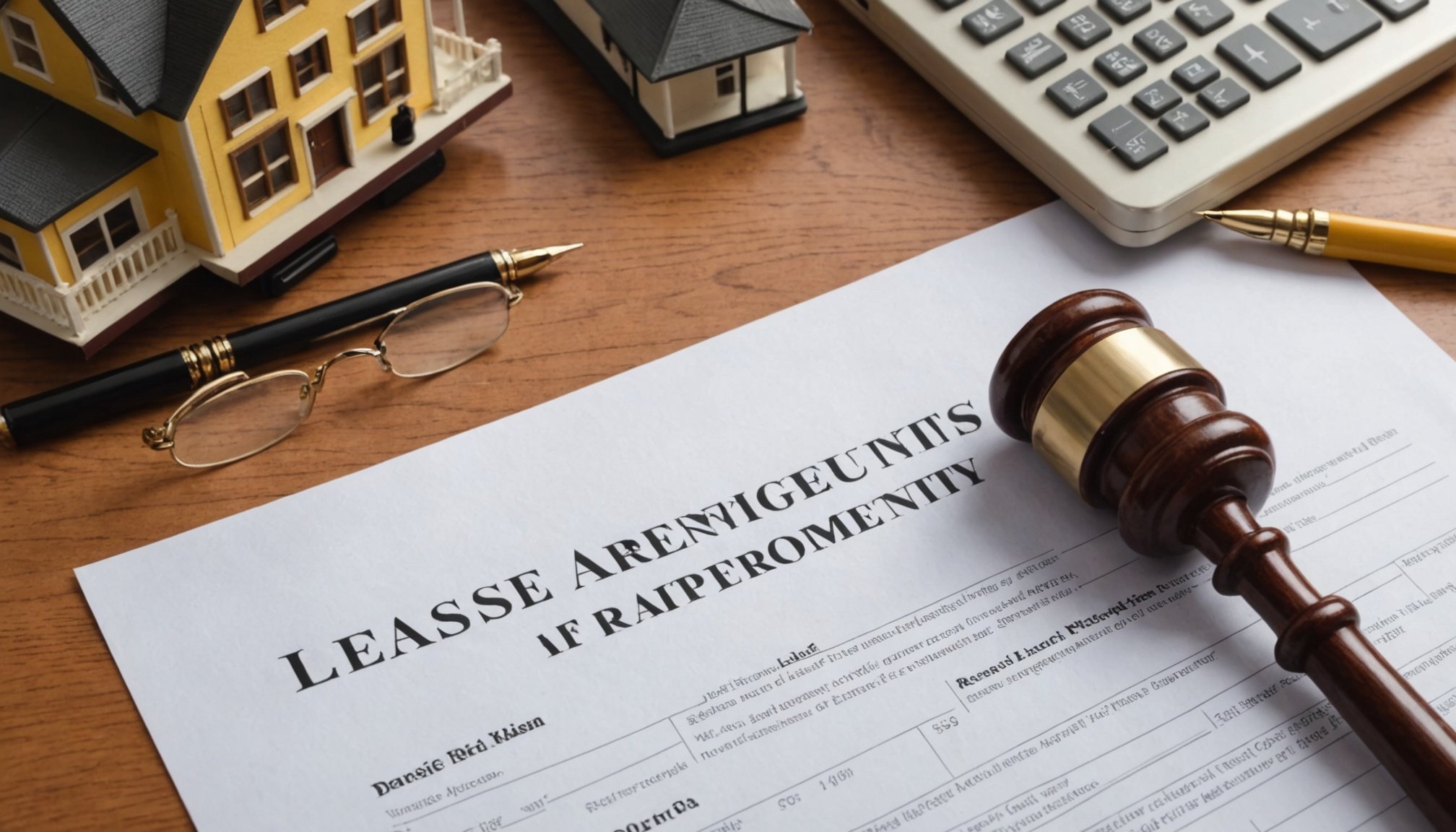In the bustling world of real estate, navigating the intricacies of lease agreements can be a daunting task. Whether you are a property landlord or a tenant, understanding the fundamental aspects of a lease is critical before diving into a rental agreement. Knowledge and preparation can save both parties from potential legal snags and ensure a smooth renting experience.
Lease agreements are legally binding documents that outline the terms under which landlords and tenants will coexist. These agreements govern the use of a property and specify the responsibilities of each party. Given the legal weight they carry, it’s paramount to fully read and comprehend the terms stipulated in the lease before pen meets paper. This article aims to elucidate the essential components of lease agreements, offering insights and advice to those eager to rent or lease a property.
Also to discover : What should you look for in a property management company for buy-to-let investments?
Understanding the Basics of Lease Agreements
Lease agreements serve as the backbone of rental transactions and establish a legal framework that both landlords and tenants must adhere to. Before entering this agreement, it is crucial to grasp its fundamental components.
A typical lease agreement will specify the term of the lease, which can range from a month-to-month to a long-term arrangement, usually a year or more. The flexibility of a month-to-month lease allows tenants and landlords to terminate or renew the agreement with shorter notice. However, long-term leases often provide stability and predictability, which can be an attractive option for both parties.
Additional reading : What are the implications of the new mortgage affordability tests introduced in the UK?
Another important aspect is the rent. This section will outline the rent amount, due date, and payment method. It’s essential to note any penalties for late payments, which might vary according to state regulations.
Moreover, you should pay close attention to the state of the property as specified in the lease. This includes expected maintenance and repair responsibilities. Tenants should understand what constitutes normal wear and tear versus damage for which they could be financially responsible.
Finally, the lease should clarify both parties’ rights and obligations regarding the use of shared spaces, noise restrictions, and pet policies. These stipulations can vary significantly between different properties and landlords. Recognizing these elements will help ensure that both parties enter into the leasing process with a clear understanding of expectations.
Legal Implications of Lease Agreements
A lease agreement carries significant legal implications. Once signed, it becomes a binding contract. Thus, it is vital to be fully informed about the legal aspects before agreeing to the terms. Tenants and landlords alike should be aware of what rights are protected under the lease.
From a tenant’s perspective, maintaining the right to quiet enjoyment of the property is crucial. This legal right ensures that tenants can enjoy their rented space without undue disturbance. Similarly, landlords must comply with state and local housing laws, ensuring the property is habitable and safe.
The lease should detail protocols for potential disputes, outlining steps that the landlord and tenant must follow to resolve them. Some leases might require arbitration or mediation, while others could specify legal action as a recourse.
Security deposits are another important aspect covered by lease agreements. Tenants should be aware of the amount required upfront and the conditions under which it can be withheld. Landlords must adhere to state-specific guidelines regarding the return of security deposits.
Breaking a lease carries legal risks and can result in financial consequences. It’s crucial to understand what’s involved if circumstances necessitate terminating the lease early. This might include forfeiting a security deposit or paying additional fees.
In summary, having a comprehensive understanding of the legal framework within which lease agreements operate can save both landlords and tenants from future complications. Reading and discussing the lease thoroughly before signing it is essential to avoid misunderstandings.
Key Clauses to Watch For in Lease Agreements
Navigating a lease agreement requires a keen eye for detail, especially when it comes to key clauses that can have significant implications for both landlords and tenants. Carefully reviewing these clauses will ensure that you are well-prepared before entering a rental agreement.
One critical clause is the rent escalation clause. This specifies how and when the rent will increase during the lease term. Such clauses are common in long-term leases and can impact your budgeting and financial planning.
Pay special attention to the renewal clause, which outlines the process for extending the lease. Knowing the terms of renewal can prevent unexpected changes or renegotiations, ensuring a seamless transition if you wish to continue the rental relationship.
The lease may also include restrictions on modifications to the property. These can range from minor changes, such as painting walls, to significant alterations. Understanding these restrictions can prevent disputes and potential charges for restoring the property to its original state.
Subletting is another area covered in many lease agreements. The lease will specify whether subletting is permitted and what procedures must be followed. For tenants considering a temporary relocation, knowing these terms can be invaluable.
Lastly, the lease should address the process for handling repairs and maintenance. It’s essential to know whether the landlord or the tenant is responsible for certain repairs and how quickly they must be addressed. This knowledge can prevent frustration and ensure that the property remains in excellent condition.
In conclusion, identifying and understanding these key clauses will equip both landlords and tenants with the information needed to navigate their lease agreements confidently and avoid unpleasant surprises.
Preparing for the Signing of a Lease Agreement
The process of signing a lease agreement is a significant step in the rental journey. Proper preparation can make this process as seamless as possible, ensuring that both landlords and tenants are satisfied with the terms.
Before the signing, landlords should provide tenants with a comprehensive copy of the lease agreement. This allows sufficient time for review and understanding of the terms. It is advisable for both parties to discuss and clarify any ambiguities or concerns before the signing day.
For tenants, performing a thorough read of the lease agreement is essential. Pay attention to any amendments or additional clauses that might have been inserted. This is the time to raise questions and negotiate any terms that you are not comfortable with.
In many cases, landlords might require documentation such as identification, proof of income, and references during the signing. Ensuring that all required documents are readily available can expedite the process.
During the signing, both parties should ensure that all agreed-upon terms are accurately reflected in the document. This includes any verbal agreements made during negotiations. Once satisfied, both parties should sign and date the lease, retaining a copy for their records.
Finally, tenants should take the time to conduct a walkthrough of the property with the landlord. Documenting the state of the property with photos or a checklist can be beneficial in avoiding disputes over security deposits at the end of the lease term.
In conclusion, methodical preparation and thorough understanding of the lease terms will foster a positive landlord-tenant relationship and pave the way for a successful rental experience.
In the complex landscape of real estate rental, a keen understanding of lease agreements is indispensable for both landlords and tenants. These documents are not just mere formalities—they establish the foundational relationship between both parties and protect their rights and responsibilities.
Having explored the core components of lease agreements, the legal implications, key clauses, and the signing process, you are now equipped with the knowledge to approach lease agreements with confidence and clarity.
Ultimately, a well-drafted lease agreement benefits both parties, reducing the likelihood of disputes and ensuring a harmonious rental relationship. By taking the time to read, understand, and discuss the terms of the lease thoroughly before signing, you pave the way for a successful rental experience.











